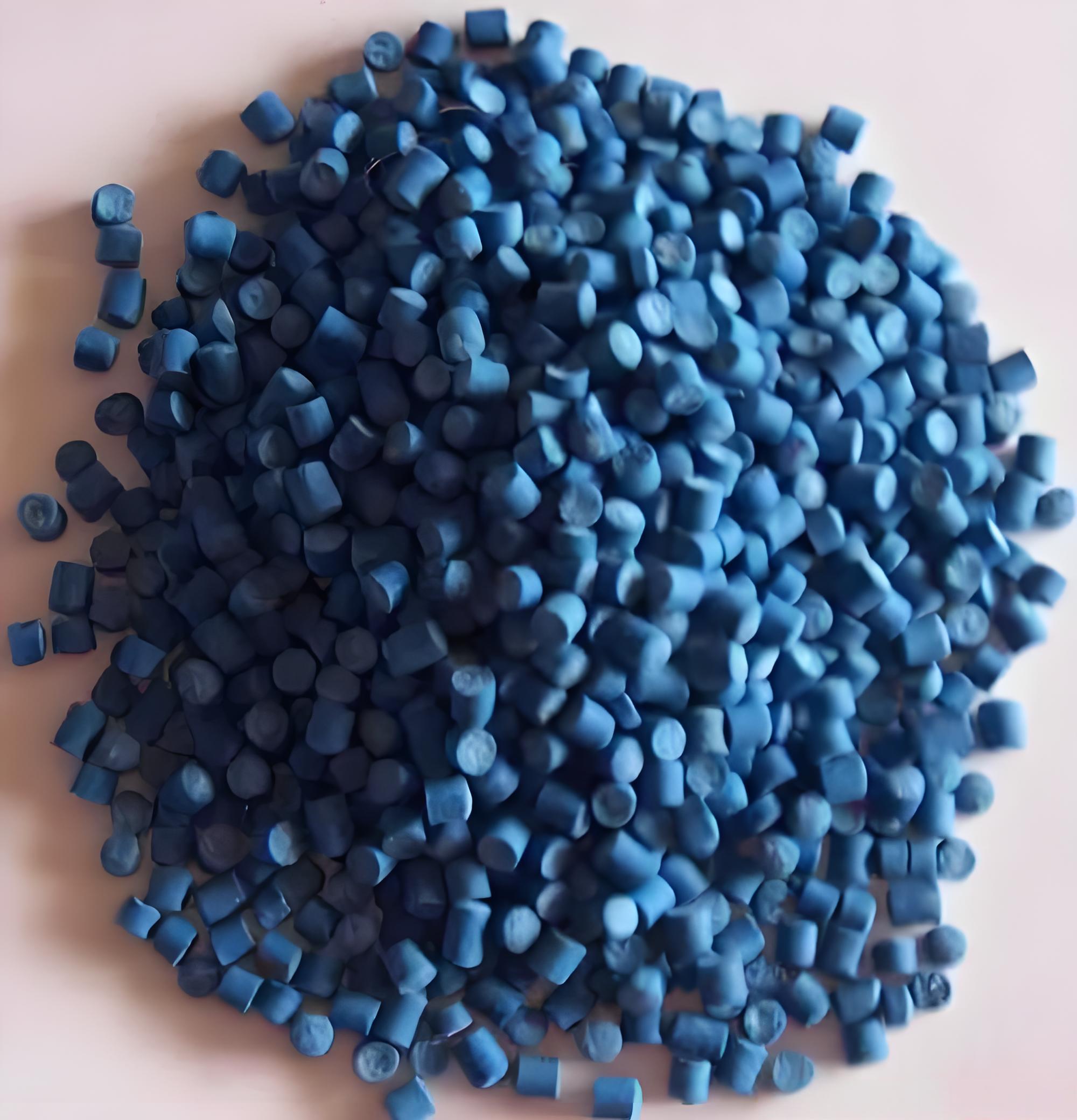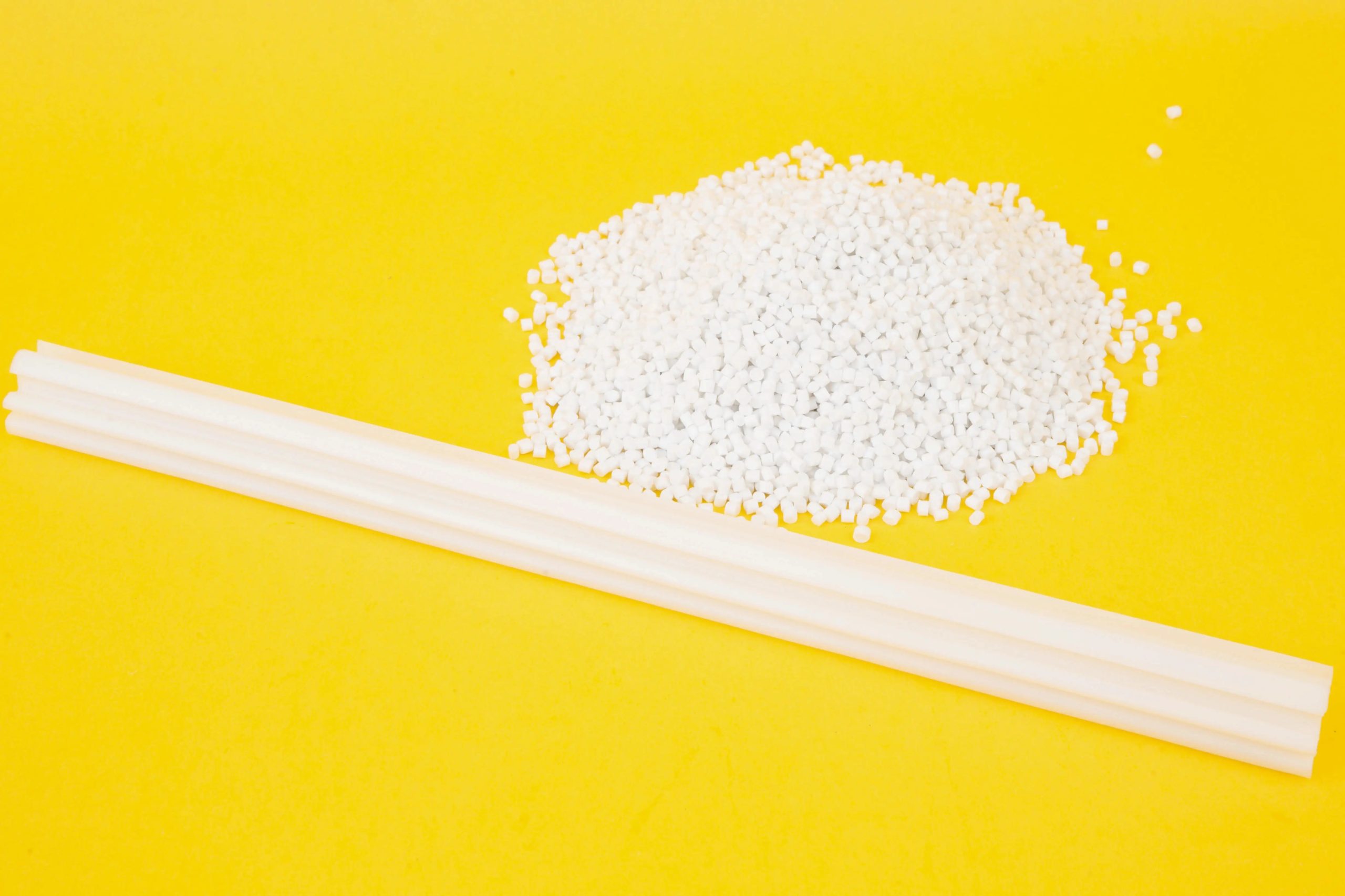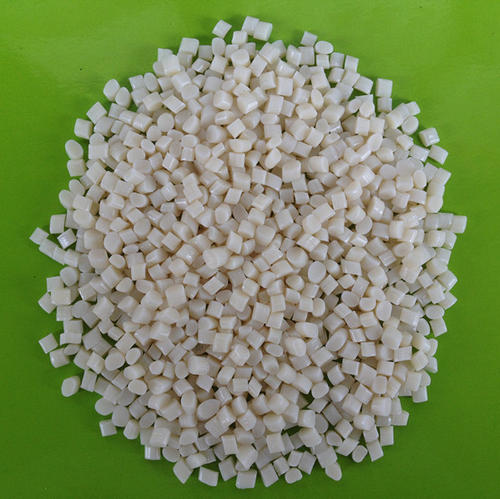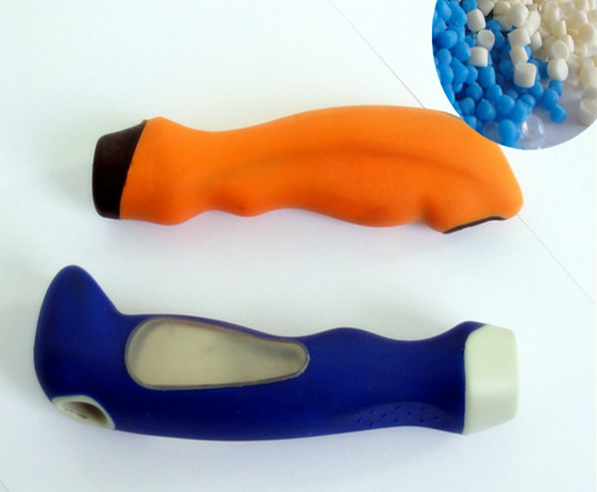As a materials engineer with over a decade of experience in industries ranging from footwear to automotive parts, I’ve fielded my fair share of questions about polymers. One that keeps cropping up, whether from product designers, manufacturers, or curious hobbyists, is: Is TPR material the same as rubber? It’s a question that seems simple but opens a Pandora’s box of material science nuances. Having spent years specifying materials for everything from yoga mats to industrial seals, I can tell you that TPR and rubber are often confused because of their similar feel and flexibility. But they’re not identical. In this article, I’ll break down what TPR is, how it compares to rubber, and help you decide which is right for your project. Let’s get started with a clear, practical lens.

What Is TPR? Getting the Basics Down
To tackle whether TPR is rubber, we first need to define TPR, or Thermoplastic Rubber. TPR is a subset of thermoplastic elastomers (TPEs), materials that blend the stretchy, elastic properties of rubber with the moldability of plastics. Early in my career, I worked with a toy manufacturer who loved TPR for its ability to form soft, grippy handles without the hassle of traditional rubber processing. TPR is typically made from a mix of polymers—often styrene-based, like SBS (styrene-butadiene-styrene) or SEBS (styrene-ethylene-butylene-styrene)—combined with plasticizers, fillers, and additives to fine-tune its hardness, color, or durability.
What sets TPR apart is its thermoplastic nature. Unlike thermoset materials, which are permanently set after curing, TPR can be melted and reshaped multiple times. This makes it a go-to for injection molding and extrusion, processes I’ve used for products like phone cases, shoe soles, and medical tubing. But does its rubber-like behavior make it rubber? Hold that thought—we’ll circle back after exploring rubber itself.
What Is Rubber? A Quick Refresher
Rubber is a broad term covering both natural and synthetic elastomers known for their elasticity, toughness, and ability to return to their original shape after stretching. Natural rubber, harvested from the sap of rubber trees (latex), has been used for centuries in products like tires and erasers. Synthetic rubbers, like SBR (styrene-butadiene rubber), neoprene, or EPDM, are engineered for specific properties, such as heat resistance or chemical stability. I’ve specified EPDM for automotive seals because of its weather resistance and neoprene for wetsuits due to its flexibility.
Most rubbers are thermoset, meaning they undergo a chemical process called vulcanization (often with sulfur or peroxides) to form cross-links between polymer chains. This gives rubber its durability but makes it impossible to remelt or recycle easily. I once worked on a project where we tried to repurpose scrap rubber from tire production—let’s just say it was a logistical nightmare compared to recycling TPR.
So, at first glance, TPR and rubber seem similar: both are flexible, elastic, and used in similar applications. But the devil’s in the details.

Is TPR the Same as Rubber?
The straightforward answer is: No, TPR is not the same as rubber, but it’s designed to mimic rubber’s properties in many ways. Let me break it down based on my experience.
TPR is a thermoplastic elastomer, while most rubbers are thermoset elastomers. This fundamental difference affects their chemical structure, processing, and performance. TPR’s ability to be melted and remolded makes it easier to work with in high-volume manufacturing, like when I helped a client produce thousands of TPR shoe soles in a single run. Rubber, on the other hand, requires vulcanization, a more complex and energy-intensive process, which I’ve seen slow down production for heavy-duty products like conveyor belts.
That said, TPR’s rubber-like feel—soft, stretchy, and grippy—leads to the confusion. I remember a client asking why their TPR yoga mat was labeled “rubber” in marketing materials. The truth? It was TPR, but the brand used “rubber” to appeal to consumers familiar with the term. This kind of marketing muddies the waters, so let’s compare the two materials head-to-head.
TPR vs. Rubber: A Detailed Comparison
To clarify the differences, I’ve put together a table summarizing TPR and rubber based on my work across various projects:
| Property | TPR | Rubber (Natural/Synthetic) | Implications |
|---|---|---|---|
| Material Type | Thermoplastic elastomer | Thermoset elastomer | TPR is recyclable; rubber is not |
| Processing | Injection molding, extrusion | Vulcanization, compression molding | TPR is faster, cheaper to process |
| Durability | Moderate, wears over time | High, resists wear and tear | Rubber better for heavy-duty use |
| Applications | Shoe soles, grips, toys | Tires, seals, hoses | TPR for cost-sensitive, rubber for performance |
This table highlights why TPR and rubber aren’t interchangeable, even if they overlap in some uses. TPR’s recyclability and ease of processing make it a darling of consumer goods, while rubber’s durability and resistance to extreme conditions keep it king in industrial applications.
Key Differences in Properties and Performance
Let’s dive deeper into the properties that set TPR and rubber apart, drawing from my hands-on experience:
1. Processing and Manufacturing
TPR: As a thermoplastic, TPR is melted and shaped using standard plastic processing equipment. I’ve overseen TPR production for phone cases where we could switch colors mid-run without stopping the machine—a huge time-saver. Its low processing temperature and fast cycle times make it cost-effective.
Rubber: Vulcanization requires heat, pressure, and time to cure, often in custom molds. I worked on a project for rubber gaskets where mold setup took days, and scrap material couldn’t be reused. This makes rubber pricier and slower to produce.

2. Durability and Wear
TPR: TPR is flexible but less resistant to abrasion and long-term stress. I’ve seen TPR shoe soles crack after a year of heavy use, especially in harsh weather. It’s fine for light-duty applications but not for rugged environments.
Rubber: Rubber excels in toughness. For example, EPDM seals I specified for a construction project lasted over a decade outdoors, while TPR would’ve degraded much faster.
3. Environmental Resistance
TPR: TPR struggles with extreme heat, UV light, and certain chemicals. I once tested TPR for an outdoor mat; after six months of sun exposure, it became brittle. Additives can improve resistance, but they raise costs.
Rubber: Synthetic rubbers like neoprene or silicone handle heat, chemicals, and UV better. Natural rubber is less resistant but still outperforms TPR in many cases.
4. Recyclability
TPR: Being thermoplastic, TPR can be remelted and recycled, a big plus for sustainability-focused clients. I worked with a company that recycled TPR scraps into new products, cutting waste significantly.
Rubber: Thermoset rubbers can’t be remelted, so recycling is limited to grinding into crumbs for filler or asphalt. This was a dealbreaker for a client aiming for a circular production model.
5. Cost
TPR: Cheaper to produce due to simpler processing and lower material costs. I’ve specified TPR for budget-conscious projects like toy grips, where cost trumped longevity.
Rubber: More expensive due to complex processing and raw material costs. However, its durability can justify the price for high-performance applications.

When to Use TPR vs. Rubber
Choosing between TPR and rubber depends on your project’s needs. Here’s how I approach material selection:
Use TPR When: You need a cost-effective, flexible material for light-duty or consumer products. Examples include shoe soles, tool grips, or soft toys. TPR’s recyclability and fast processing are bonuses for high-volume production.
Use Rubber When: Durability, environmental resistance, or heavy-duty performance is critical. Think tires, industrial seals, or outdoor hoses. Rubber’s longevity often outweighs its higher cost in demanding applications.
I once helped a startup choose TPR for their fitness tracker bands because they needed vibrant colors and low costs for a mass-market product. For a marine equipment supplier, we went with neoprene rubber for cable insulation due to its saltwater resistance—TPR wouldn’t have survived.
Real-World Applications and Examples
To ground this in reality, let me share a few projects where TPR and rubber played starring roles:
Footwear Production: A sneaker brand I consulted for used TPR for outsoles because it was cheap, easy to mold, and offered decent grip for casual wear. For their high-performance running shoes, they switched to rubber (SBR blend) for better abrasion resistance on rough terrain.
Automotive Seals: A car parts manufacturer needed weatherproof seals for doors. We chose EPDM rubber for its UV and temperature resistance. TPR was tested but failed after a year of exposure, proving rubber’s superiority for this use.
Toy Manufacturing: For a line of soft, squeezable toys, TPR was ideal—safe, flexible, and cost-effective. Rubber would’ve been too stiff and expensive for a low-margin product aimed at kids.
Medical Tubing: A medical device company used TPR for flexible tubing because it was biocompatible and easy to sterilize. For high-pressure applications, they opted for silicone rubber to handle extreme conditions.
These cases show that TPR and rubber each have their sweet spots. Misjudging the application can lead to premature failure or bloated costs.

Common Misconceptions About TPR and Rubber
Over the years, I’ve heard plenty of myths that fuel the TPR-rubber confusion. Let’s debunk a few:
Myth: TPR is just a cheap knockoff of rubber. Not true. TPR is engineered for specific applications where cost, recyclability, or processing speed matter. It’s not a “lesser” material—just different.
Myth: All rubber-like materials are thermoset. Nope. TPR proves that thermoplastics can mimic rubber’s elasticity while offering unique advantages like recyclability.
Myth: TPR and rubber can always be swapped. Wrong. Their performance gaps (durability, heat resistance) make them suited for different roles. I’ve seen projects fail when TPR was used in place of rubber for high-stress applications.
Practical Tips for Choosing the Right Material
If you’re wondering whether TPR or rubber is right for your project, here’s my step-by-step advice:
Define Your Requirements: What’s the product’s function? Will it face wear, weather, or chemicals? For example, a garden hose needs rubber’s durability, while a phone case can use TPR.
Consider Lifespan: If the product needs to last years under stress, lean toward rubber. For short-term or light-duty use, TPR might suffice.
Evaluate Processing Needs: Need fast, high-volume production? TPR’s molding ease is a win. For custom shapes or heavy-duty parts, rubber’s vulcanization might be worth the extra effort.
Check Budget: TPR is generally cheaper, but rubber’s longevity can offer better value for critical applications. Balance upfront costs with long-term performance.
Test Samples: Always request material samples from suppliers. I’ve saved clients headaches by testing TPR vs. rubber under real-world conditions before committing.
Future Trends in TPR and Rubber
The materials world is evolving, and I’ve noticed shifts that could impact TPR and rubber:
Bio-Based TPR: Manufacturers are developing TPRs from renewable sources, like plant-based polymers, to boost sustainability. This could make TPR even more appealing for eco-conscious brands.
Advanced Rubber Blends: New synthetic rubbers with enhanced properties (e.g., self-healing or extreme temperature resistance) are emerging, keeping rubber competitive in high-tech applications.
Hybrid Materials: Some companies are blending TPR with rubber-like additives to combine recyclability with rubber’s durability, a trend I’m watching closely.
These innovations could narrow the gap between TPR and rubber, giving you more options down the line.

Closing Thoughts
So, is TPR material the same as rubber? Not quite—TPR is a thermoplastic elastomer that mimics rubber’s flexibility but differs in structure, processing, and performance. While TPR shines in cost-sensitive, recyclable applications like shoe soles or grips, rubber dominates in durable, high-stress uses like tires or seals. Understanding their strengths and limitations is key to picking the right material for your project. My years in the field have taught me that no material is “better”—it’s about matching the material to the job. Test samples, consult suppliers, and weigh your priorities to make a choice you won’t regret.
Related Questions and Answers
Q: Can TPR be used in place of rubber for tires?
A: No, TPR isn’t suitable for tires due to its lower abrasion resistance and heat tolerance. Tires need rubber’s durability to handle road wear and high temperatures. I’ve seen TPR used in toy wheels, but for real vehicles, stick with rubber.
Q: Is TPR safe for food-contact or medical applications?
A: Some TPR grades are FDA-approved for food contact or medical use, but you must verify certifications. I worked with a medical client who used TPR for tubing, but only after confirming biocompatibility.
Q: How do I tell if a product is TPR or rubber?
A: It’s tough without testing, but TPR is often lighter and less springy. Check the product’s spec sheet or ask the manufacturer. I sometimes use a heat test (carefully!)—TPR softens at lower temperatures than rubber.
Q: Is TPR more eco-friendly than rubber?
A: TPR’s recyclability gives it an edge over thermoset rubbers, which are harder to recycle. However, TPR’s petroleum-based production isn’t inherently green. Bio-based TPRs are a promising step toward sustainability.





